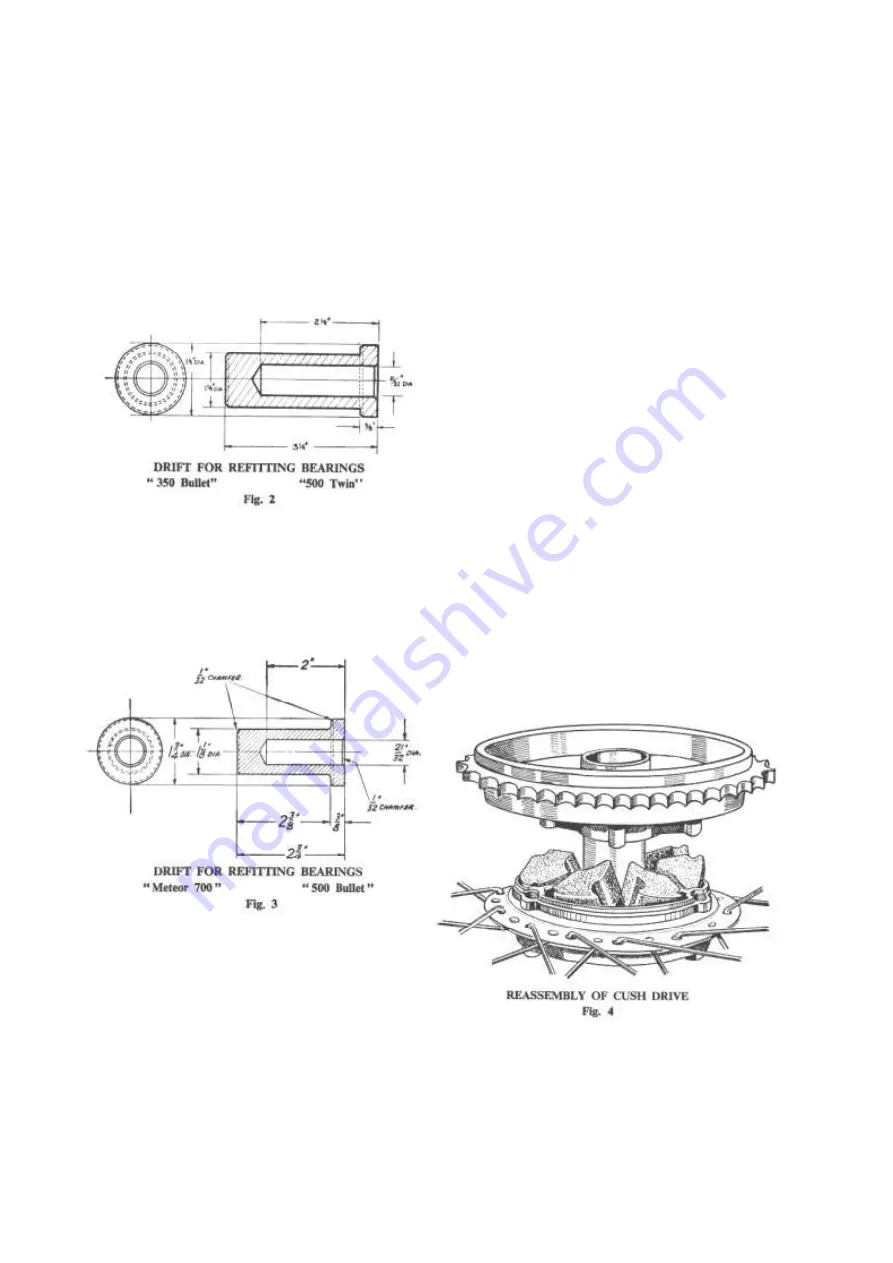
ROYAL ENFIELD WORKSHOP MANUAL
Section L2 Page 3
entered into one end of the hub barrel which is then
supported on one of the hollow drifts. The other
bearing is then threaded over the upper end of the
spindle and driven home by means of the second
hollow drift either under a press or by means of a
hammer which will thus drive both bearings into
position simultaneously.
In order to make quite sure that there is clearance
between the inner faces of the outer bearings and the
bottom of the recesses fit the distance washers against
the inner races of the bearings and either fit the
assembly of brake cover plate, speedometer gearbox,
etc., or make up this distance with tubular distance
pieces. Fit and tighten the spindle nuts. Tightening the
nuts should not have any effect on the ease with
which the spindle can be turned. If tightening the nuts
makes the spindle hard to turn this may be taken as
proof that the bearings are bottoming in the recesses
in the hub barrel before they are solid against the
shoulders on the spindle. In this case the bearing
should be removed and a thin packing shim fitted
between the inner race and the shoulder on the
spindle.
9. Removal of Brake Operating Cam and Brake
Shoe Pivot Pin
The method of doing this has already been
described in Paragraph 3 dealing with the 6 in. brake.
The method is precisely the same for the 7 in. brake
except that, owing to the different type of return
springs used, it is, in this case, possible to remove the
shoes from the pivot pin and operating cam before the
latter are removed from the cover plate.
10. Cush Drive
The sprocket/brake drum is free to rotate on the
hub barrel. Three radial vanes are formed on the back
of the brake drum and three similar vanes are formed
on the cush drive shell. Six rubber blocks are fitted
between the vanes on the brake drum and those on
the cush drive shell, thus permitting only a small
amount of angular movement of the sprocket/brake
drum relative to the hub barrel and transmitting both
driving and braking torque and smoothing out
harshness and irregularity in the former.
If the cush drive rubbers become worn so that the
amount of free movement measured at the tyre
exceeds 1/2 in. to 1 in., the rubbers should be
replaced. To obtain access to them remove the
complete wheel as described above, remove the brake
cover plate complete with the brake shoe assembly,
unscrew the three Simmonds nuts at the back of the
cush drive shell, if necessary holding the studs,
32431, by means of the flats on the heads inside the
brake drum. Drive out the three studs into the brake
drum after which the sprocket/brake drum can be
separated from the cush drive shell and the six cush
drive rubbers can be lifted out.
www.hitchcocksmotorcycles.com
Summary of Contents for 500 TWIN 1949
Page 7: ...ROYAL ENFIELD WORKSHOP MANUAL w w w h i t c h c o c k s m o t o r c y c l e s c o m ...
Page 51: ...ROYAL ENFIELD WORKSHOP MANUAL w w w h i t c h c o c k s m o t o r c y c l e s c o m ...
Page 63: ...ROYAL ENFIELD WORKSHOP MANUAL w w w h i t c h c o c k s m o t o r c y c l e s c o m ...
Page 69: ...ROYAL ENFIELD WORKSHOP MANUAL w w w h i t c h c o c k s m o t o r c y c l e s c o m ...
Page 81: ...ROYAL ENFIELD WORKSHOP MANUAL w w w h i t c h c o c k s m o t o r c y c l e s c o m ...
Page 91: ...ROYAL ENFIELD WORKSHOP MANUAL w w w h i t c h c o c k s m o t o r c y c l e s c o m ...
Page 108: ...ROYAL ENFIELD WORKSHOP MANUAL NOTES w w w h i t c h c o c k s m o t o r c y c l e s c o m ...
Page 109: ...ROYAL ENFIELD WORKSHOP MANUAL NOTES w w w h i t c h c o c k s m o t o r c y c l e s c o m ...











































